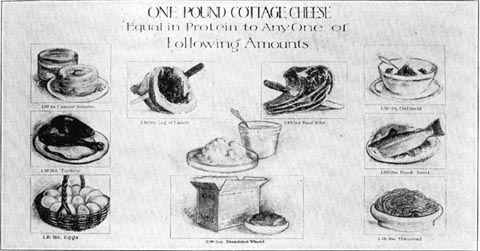After having pointed out
the food values of dairy products and their relative cheapness
when compared with other food articles, which they can in large
measure replace and release for export, let us see what must be
done to keep up an ever-increasing supply of these products, in
the face of the constantly mounting production costs.
Enough data on milk production
has been gathered to prove conclusively that the dairy cow
produces human food cheaper than any other animal on the farm;
that no other animal can take the roughage, hay, grasses, corn
fodder and corn silage and the by-products from our food factories
and mills and in return give so much nourishing human food stuff.
For example, it has been shown that one cow, if slaughtered will
provide sufficient meat for two soldiers for one year, while the
milk from the same cow will yield equivalent food material for
twenty soldiers for one year. To show further the economy of the
dairy cow, it is of interest to know that Katy Gerben, University
of Nebraska dairy cow, has in seven consecutive milking periods
produced as much digestible food material as is contained in the
carcasses of 47 steers. To this might he added the fact that she
has raised seven calves whose value has not been computed. Also
the fact should not be overlooked that dairying contributes in
large measure to the direct beef output of the nation by the
slaughter of superannuated dairy animals and the baby beef not
needed for breeding purposes. Statistics tell us that practically
all of Denmark's beef supply comes from this source. How large a
per cent of our meat supply is furnished in this way, we have no
figures to prove, but it is safe to say that it is large enough to
count as an important factor at the present time.
Legal prosecution of dairymen or
sensational boycotts can ultimately have but one result--that of
driving the too frequently overworked dairymen into other fields
of agriculture, resulting in a short supply and a still higher
price. A full realization of the favorable comparison of dairy
products with other food articles together with the definite
knowledge of the increased cost of producing dairy products will
convince the consumer of the justness of the dairyman's demands
for such increase in price as will give him reasonable returns for
his dairy investment and stimulate him to further production.
Looking beyond the economic and
financial considerations, it must be admitted that no laborer in
the field of agriculture is rendering a more patriotic service
than the dairyman in adding to the supply of a much needed food
product. He feels partially repaid for his efforts. I am sure, in
the thought that he is doing his share to help win the war and
lessen the sufferings of his fellow man.




